Chernobyl

HBO’s global sensational miniseries, Chernobyl had viewers gripped for the finale that aired with record viewers on the 3rd June 2019. I was most definitely one of the viewers who has been gripped watching the nail-biting series from the very beginning.
I have always had a strange fascination with Chernobyl since I first heard about the nuclear disaster when I was at college studying sociology. I was fascinated with how we had never learnt about it in schools, it was never talked about, like some lost forgotten history amongst modern day society. Yet it is one of the biggest man-made disasters to have happened on earth. Were we just supposed to forget that this ever even happened? So, whenever I would see newspaper articles, or books I would read through them with great interest trying to find out what happened.
Craig Mazin, the writer and producer of the hit drama series has managed to blow viewers away with his intense storytelling talents. The writer of the Identity Thief, and The Hangover II has traded comedy in to tell the horrific story of one of the biggest manmade disasters the world has ever seen. The style of the narrative managed to contain elements of realism that is associated with documentary making.
The series focuses on the real-life manmade horror that occurred in Chernobyl in April 1986. Two years prior to this disaster and Barry Hines television horror, Threads ironically set in Sheffield, England was broadcast for the first time in 1984 and again in 1985 in remembrance of atomic warfare.
Threads is set in Sheffield which is famous for its manufacturing and its steel industry. It is also famous for being my hometown! The BBC drama had people so scared that it caused public outrage as people believed that the event had actually happened in the north of England. Threads was Broadcast on BBC2 in 1984. Threads was broadcast for the second time in 1985, in remembrance to the fortieth anniversary of the atomic bombings of Nagasaki and Hiroshima.
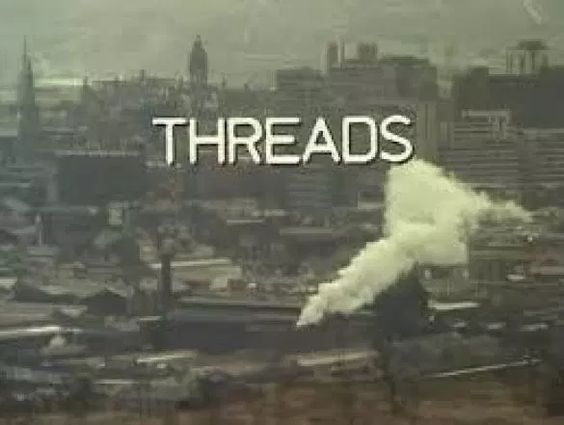
Audiences will be left feeling disturbed by the raw realism of the series, as the events shown in the film are based on real life events. Chernobyl exposes the interpersonal economic effects of a nuclear disaster with everyday people.
As with the Chernobyl miniseries, Threads had a style of realism. Realist documentaries typically look at the past as Chernobyl did, however, Threads looked at what ‘might happen’ in the near future. Threads focused on manmade horror and the social threats of the era during the 1980’s. Threads was one of the first television dramas to illustrate the horrific impact a nuclear war would have had on the human race.
Threads scared its viewers on a greater level, because the nuclear war depicted in the film exposed an accurate depiction of what would have happened if nuclear bombs had have been exchanged during the cold war.
“Not every viewer is well-informed or sophisticated enough to figure out the fictitious nature of such programmes” (Justine Levine 2004, p183).
Little could Barry Hines imagine that a huge nuclear disaster was about to take place in real life just two years after his show aired in Europe.
“Terror is the suspense of what might happen, i.e what is in the dark. Horror is what is about to happen, Horror is the promise fulfilled.” (Horror Cinema 2012, p9)
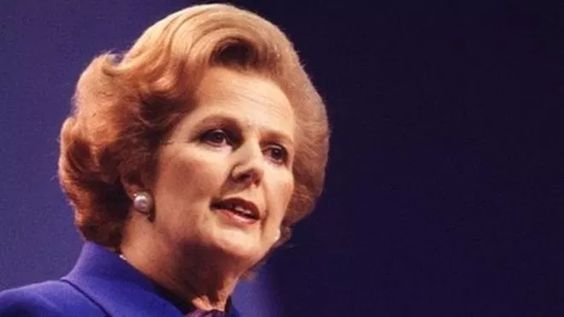
During the 1980’s, the unemployment rate was high across Europe and there was a national depression during Margret Thatcher’s reign in Britain. Thatcher’s economic and political policies emphasised deregulation and, as a consequence, television started to move away from the supernatural themes of horror and instead imitated and absorbed the anxieties of reality. A major emphasis was placed on manmade horror, boasting the flexible boundaries of the horror genre.

Public information films prepared people all over Britain for a nuclear war during the 1980’s as the anxieties of atomic powers become greater. The national anxieties of Margret Thatcher’s Britain acted as a political backdrop throughout the narrative. Similarly, class difference and the wealth structure were also emphasized in the narrative. Britain was in a state of emergency with its class divide. Threads outlines the social issues of a nuclear war.
“I do not believe that the Prime Minister would take a decision that would consign a whole generation to destruction in any conceivable circumstances what so ever.” (Powell 2010, p314).
As seen in World War II, the city Pripyat exhibited a strong community spirit as people “kept calm”, “carried on” and pulled together during the nuclear disaster. Pripyat was founded in February 1970; it was the ninth nuclear city in the Soviet Union. The city is named after the Pripyat river. The population count of the city during the evacuation was just under 50,000 people. Pripyat was a model Soviet Union city for others to follow.
The Falklands war began in 1982. Thatcherism concerns arose when Margaret Thatcher ordered the attack on the Argentinian ship, the Belgrano, on 1 May 1982, which killed 323 Argentines. Threads outlines the social issues of a nuclear war. The threat of a nuclear war became more conceivable from the ruthless actions Thatcher had exhibited in the Falklands war.
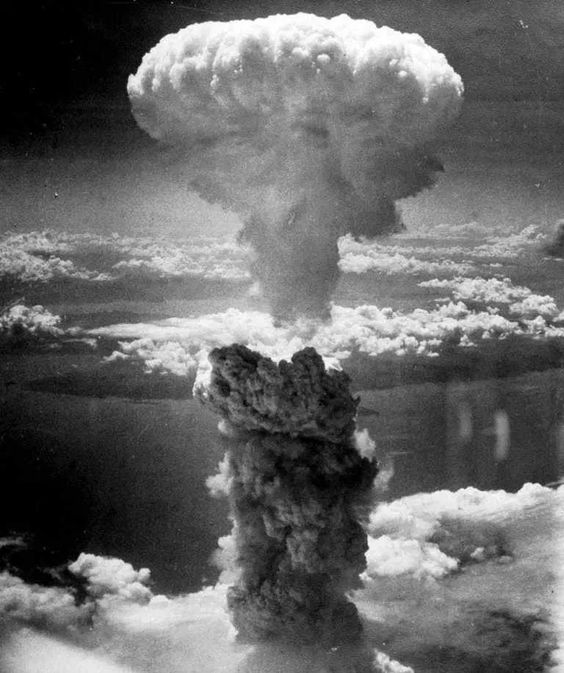
The minimum warning time of a nuclear attack on the UK is estimated at three and a half minutes. (Powell P.329).
On 26th April 1986, a nuclear explosion occurred in Chernobyl, Ukraine. Mass amounts of radioactive atoms were released into the atmosphere. The wind carried the fallout across Europe, potentially endangering twenty million people from the radioactive effects of the fallout. At present Chernobyl is the worst nuclear disaster to ever have happened. A constant threat of nuclear war and disaster is still present in today’s society, with tensions building in the Middle East and North Korea.
Furthermore, Chernobyl demonstrated the ineffectiveness that the public information films would have had if a nuclear war had have occurred. The familiar becomes the unfamiliar as the town is taken over with radiation. The domestic space has been invaded by an enemy.
“Drama-documentary has long been a controversial genre, because of the common, simplistic, view that it blurs the ‘truth’ of documentary with the ‘lie’ of fiction” (Dave Rolinson).

Unlike in Threads, there is a distinct a lack of news being reported about the nuclear disaster via televisions, radio, newspaper, and other media sources. The Media have deliberately been left out of scenes throughout the entire series of Chernobyl. When you compare this with the drama Threads, were utilized televisions are a backdrop in a majority of the scenes. As the conflicts in the Middle East grow stronger, the TV becomes louder. The television as a medium raises a debate in the first half of the programme. This is because the television news broadcasts about the transpiring nuclear war have been ignored. This carefully reflects the relationship that television has with its viewers. Television broadcasting can be used for positive and educating purposes. Conversely television broadcasting itself is an area of anxiety and concern as it can equally be used for evil motives. Televisions have invaded billions of homes globally, as they sit silently in the corner of peoples’ living rooms. During World War 2 television broadcasting was stopped owing to the government’s national security fears. The television is used as a mode of control, surveillance and observation. The invisible network which binds all televisions together on a national and global level is still a modern-day threat in societies.
“As TV becomes less uncanny and more ubiquitous and banal, an everyday amenity of modern life, it becomes the perfect counterpoint to the uncanny or supernatural” (Stacey Abbott 2013, p181).
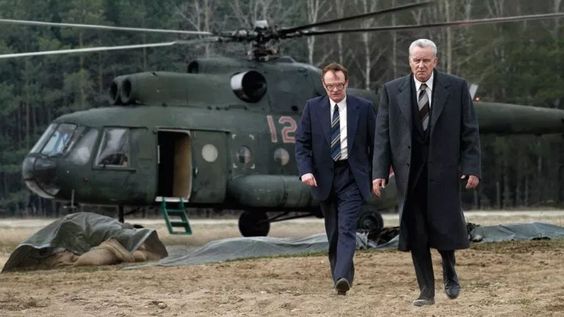
The lack of news reporting in Chernobyl outlines a visible distinction between the west of Europe and the Soviet Union. The secrecy of the Soviet Union was both its power and eventually its downfall. After the nuclear disaster occurred in April 1986 intercity phone calls were cut to prevent information being leaked to the rest of the world. It took ten days after the explosion of reactor four before warning signs were finally given out. Broadcasting media has a fundamental role in society, its prime purpose is to educate and inform its audiences. Ideological values and public service broadcasting values are absent throughout Chernobyl, they don’t want mass panic, they want secrecy despite the cost of lives.
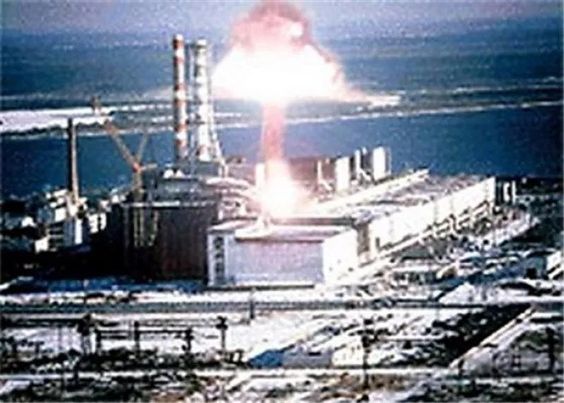
The drama series, Chernobyl focuses on the responsibility and of the what happened. Responsibility for the nuclear disaster and radiation were feared far more over than the radiation effects itself. Evacuation was postponed until 36 hours after reactor 4 exploded. because officials wanted to avoid responsibility, in doing so putting millions of people at risk. Officials lured the people into a false sense of security. Trust in the government was completely broken.
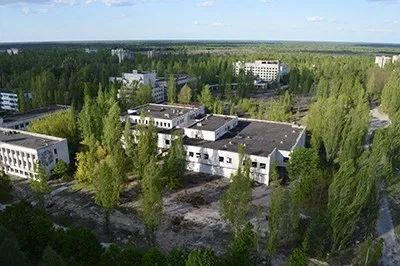
Ideologies reunites the family in the domestic home. Horror destabilises the safety element in the home. During the evacuation of Pripyat and the exclusion zone families were torn apart. A whole community was destroyed. The residents were told to pack a small bag of essentials as the evacuation was only temporary. The Soviet Union were not the only people who lied about the radiation effects, French authorities hid information about the radioactive cloud that was over its territory.
There is a distinguished lack of community solace with the officials, who we see acting selfishly and arrogantly even before the explosion occurs. If they hadn’t have behaved so arrogantly would the disaster have even taken place? The officials involved seem to be concerned about their own wellbeing and not the publics welfare or the radiation effects on the environment. Anatoly Dyatlov’s character in particular is seen as the main reason behind the explosion. Anatoly was the deputy chief-engineer in the Chernobyl nuclear power plant, and the supervisor and man in charge of the catastrophic safety test that caused reactor four to explode in 1986. The nuclear disaster has destroyed lives and seemingly the moral boundaries for the officials and government who survived. This is exemplified throughout the narrative.
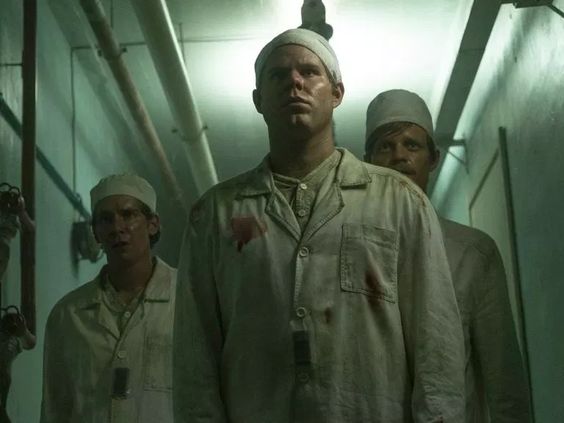
In 1991 the Soviet Union broke down when the 8th and final Soviet president Mikhail Gorbachev, the leader of the USSR resigned and declared his office extinct. This happened five years after the disaster of Chernobyl which was seen by many as the real cause of the Soviet Union downfall as it marked the beginning of the end. The revolution of 1989 and dissolution of the USSR also marked the end of the cold war.
Body horror and the power of suggestion
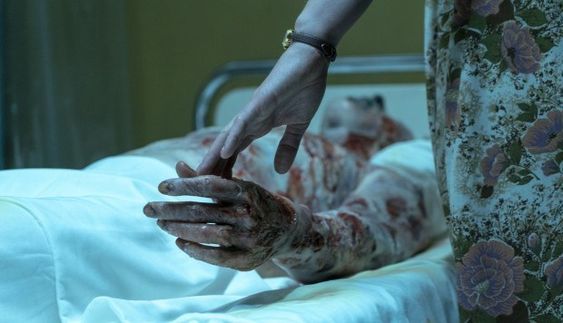
Action is dramatically accentuated on screen, albeit the main intentions of horror are off screen. The radiation is now in the air, water, buildings, laying hidden in the grass, taking no prisoners once its prey appears in the midst. A silent killer, radiation is now everywhere.
Transporting us back to the 1980’s the series felt eerily real.

This realism creates a great sense of horror for the audience because it scares people on a deeper level. Knowing that this actually happened in history, and people suffered in such a horrendous and heinous way is absolutely horrific.
Immediately after the explosion of reactor four, Chernobyl exhibited a grim dystopia. The horror aesthetics were characterised by the spectacle, with visual and cruel excess encompassing both terror and horror. Graphical horror was exposed with the destruction of the body. A scene that nobody is likely to forget is that of the dying fireman, Vasily Ignatenko. The true story of his death raises many emotions and unanswered questions,
The nuclear disaster had a catastrophic Armageddon effect on the population of Pritpat and the exclusion zones. The firemen were burnt beyond recognition. Peoples’ fate in the aftermath is abundantly worse than death itself. The new generation are dying apathetic people, The end of the soviet ‘norm’, as the human race is depicted through the mutualisation of the human.
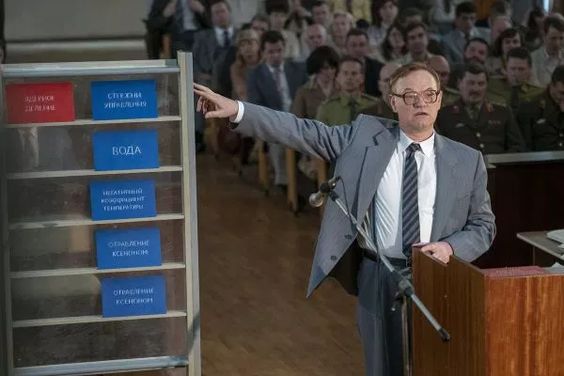
Clouds across Europe, contaminated fruits and food, effecting essential food supply. Ukraine, Belarus and parts of Russia received substantially high amounts of radiation. Other countries highly effected by the radiation were Finland, Sweden, Norway, Greece, Bulgaria and Romania.
Mazin employs horror into the scripts using the power of suggestion. Might this type of disaster happen again? Could it be even worse?
The naivety of the children on the bridge of death as characters proclaim the glowing sky “it’s beautiful” is extremely chilling to watch and thought provoking. This haunting scene is sure to stick with viewers.
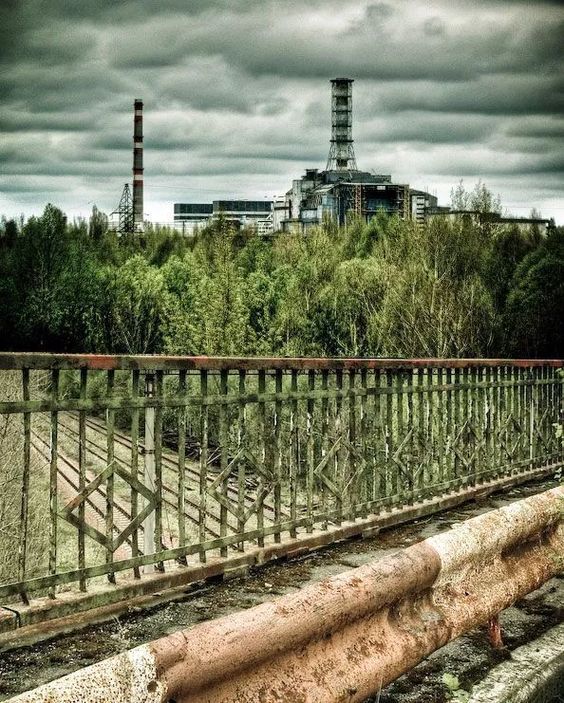
In the days after the exposition the firemen all seem to be recovering early on, this is the first positive point during the whole story. However, this glimmer of hope is short lived once we hear Valery Legasove describing in detail what happens to the human body once it is exposed to such high levels of radiation and how it starts to shut down from the inside. Horrendous death.

Firemen’s shoes.
The nuclear radiation has had a catastrophic effect on the land, and animals resulting in a devastating outcome on agriculture. Without any nourishing food the survivors have a diminutive chance of developing society or surviving. The soil is contaminated from the fall out and can no longer produce healthy thriving crops needed to feed the condensed population. Instead it is devalued to dangerously high levels of radio-activity.
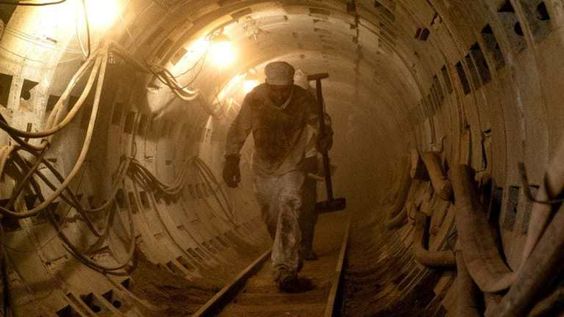
Animals are ordered to be shot as they are full of radiation; we mainly see dogs that were residents pets being killed, and this again causes horror for the audiences. The radiation increased asthma and cancer rates. The true impact of the radiation is still debated today with the Soviet death toll claiming only 31 people died as a result of Chernobyl, and the United Nations arguing that 3.5 million people were directly affected. Lack of government compassion dramatically contributes to the element of horror as the audience believe everything, the officials are telling them is the truth. The lack of empathy and communication breakdown leads to more individual lives being put at risk. Chernobyl is the true devastation of deceit.
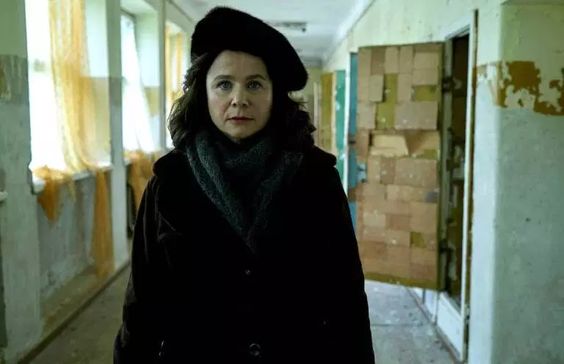
Ulana Khomyuk
There is large focus on the female character Ulana Khomyuk. Although Chernobly contains strong male characters, they are portrayed as passive whenever Ulana Khomyuk is present. The female character is fictious and was mainly created to represent the different nuclear scientists who were employed for the clean-up at Chernobyl. Considering the nature of the disaster, we can also see Ulana taking on the role and representing mother nature herself, who is referred to as being a woman and a mother. Similarly, natural disasters are also given female names. Women have been blamed for the fall of mankind since the biblical story of Adam and Eve.
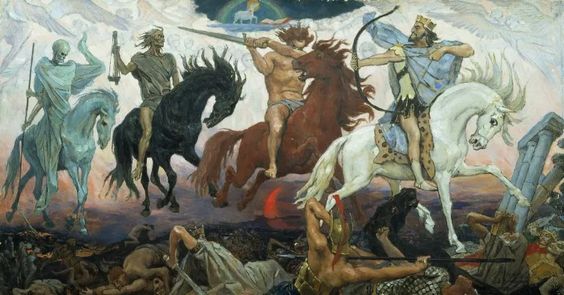
“It is necessary to mention that a woman is simply a bearer, not the creator of relevance like a man, because women live in patriarchy.” (Laura Mulvey P15.)
Only this time, the disaster is evidently caused by man and not by a female. It is now the female’s job to take on a mothering role in order to fix the worldly disaster, both politically, morally and practically. She is often seen speaking directly to Valery Legasov’s conscience. Persuading him to do the right thing by the people.
None of the females are objectified or seen from the male gaze. Ulana is seen outside of the patriarchal norms. Hollywood films typically portray men as hero’s to rescue the females that are in distress. No one can rescue the people, only the truth can save them. Truth saves people, the age old tale of good v’s evil.
“Women are the vehicle of men’s fantasies, the “anima” of the collective male unconscious, and the scapegoat of men’s fears” (Kira Cochrane 2012, p40).
The radiation does not discriminate, the victims are of all ages, sizes, and sexes. The younger the victims are, the more sinister the story becomes. Although we do not see the Lyudmila Ignatenko’s baby being born or dying, we feel her tragic pain. Her harrowing real life story is heart-breaking. Unaware of the real dangers of radiation, Lyudmila cared for her dying husband and other firefighters in the hospital. Her acts of kindness and love meant that she had physical contact with her husband, unbeknown that she and her unborn baby could by contaminated by the high levels of radiation that her husband had been exposed to. Tragically Lyudmila’s and Vasil’s baby died hours after being born. The baby girl was diagnosed with congenital heart disease and cirrhosis of the liver.

In the first episode we see a group of people watching the explosion from a bridge and children playing outside around it. The sky is glowing, and flakes of radioactive debris blows through the air like snowflakes. The bridge is known as the bridge of death, as it is reported that nobody who watched the nuclear fire from the bridge that night in April survived. Other’s have argued that this is an urban myth. The innocent onlookers probably developed some sort of acute radiation after being exposed to the poisonous air. This could have caused various health problems later in life such as asthma and cancer. The threat of radiation becomes as real as the physical and visible.
Biblical and Historical References
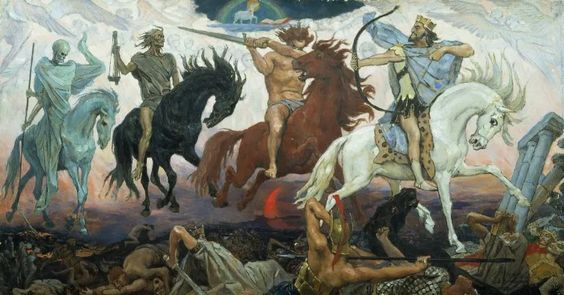
There are biblical references in the mini drama series, and real day life.
In the book of Revelation 8:7 it reads;
“The first angel blew his trumpet, and there followed hail and fire, mixed with blood, and these were thrown upon the earth. And a third of the earth was burned up, and a third of the trees were burned up, and all green grass was burned up.” (Revelation 8:7)
This catastrophic description is of events that are predicted to happen during the end of the world as we currently know it. These events are signalled by an angel blowing his trumpet as a great star named Wormwood is cast to the earth.
Revelation 9.1 reads;
“The fifth angel sounded his trumpet. And I saw a star that had fallen from heaven to the earth, and the key to the shaft of the abyss was given to him. He opened the shaft of the Abyss, and smoke ascended out of the shaft like the smoke of a great furnace, and the sun was darkened, also the air by the smoke of the shaft.” (Revelation 9.1)
This description could be used to describe the explosion of reactor four in the Chernobyl power plant. As the smoke ascended out of the reactor like the smoke of great furnace.
“Horror as art and entertainment has been with us since the beginning. Since cave paintings of the lions and tigers and bears, what are the last days of Christ but a horror tale? One of carnage, injustice, brutality, and finally, the afterlife. The bible, the Koran, the texts of ancient China and Japan all have elements of the horrific and the spiritual of man’s most painful endings and worst fears made manifest. They are reminders that the very real, very tangible end is always just around the corner.” (Horror Cinema 2012, p9)
In Zechariah 14.12 it states;
“Their flesh will rot away while they stand on their feet, their eyes will rot away in their sockets, and their tongues will rot away in their mouths.” (Zechariah 14.12)
The bible’s description is very similar to the description that Valery Legasov makes when he describes the effects that high levels of radiation have when exposed to the human body.
This statement is open to interpretation, nonetheless it could be a direct reference to a nuclear war. The Bible’s Old Testment proclaims the end of the world will begin in the Middle East, with many people believing it will be a cause of a nuclear war.
“For as the lightning cometh out of the east, and shineth even unto the west; so shall also the coming of the Son of man be” (Matthew 24:27).
The end of the world is also described in the Bible as follows:
“The heavens will disappear with a roar; and all elements will be destroyed by fire, and the earth and everything in it will be laid bare.” (Peter 3:10).
Class structure
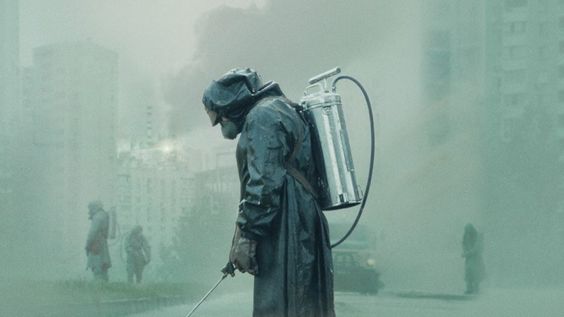
The loss of modern technology makes it hard to clean-up after the explosion, it also contributes to the difficulties of rebuilding society. After the disaster the robots wont work, bi robots are the answer. Few technologies will work due to the high levels of radiation, and the ones that might are located in other countries such as Germany, and the Soviet Union’s enemy, the USA. The much needed technology are retained by government officials involved. Moreover, this outlines the anxieties the public has about the over reliance the world has on technology.
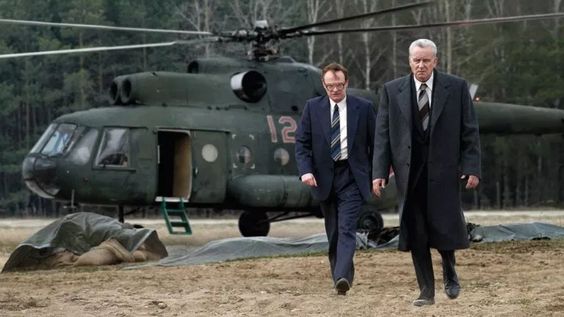
Horror is very much engaged with its time and space in history and there is also a key relationship between politics and television horror.
Straight after the explosion officials and powerful men congregate together in the basement to down play the real dangers of the explosion. Blame is passed around the table as the shelter is seen full of men smoking cigarettes, while armed guards stand by the doors. The officials communicate and give out orders to the workers below them. The officials attempt to restore order before the public panics; however, this proves extremely difficult. Without the truth, everyone appears to be doomed.
This validates the class system and how the working-class lives are not valued by the middle and upper classes. Society has extensively blamed working classes for social problems and this is demonstrated in Chernobyl when blame is passed on and no one wants to take reasonability for the explosion. If the people in the towns had have been of a high social class, they more than likely would have been warned and evacuated a lot sooner and informed of the real radiation dangers.
Anxieties over technology are outlined throughout the narrative Chernobyl, and they have to go back to human workforce. Robots immediately break down and a helicopter crashes as the military tries to extinguish the fire over rector four. Although this scene is historically inaccurate, a helicopter did crash due to the blades being clipped by a crane. In the drama series we believe the helicopter crashes due to a cloud of smoke and high levels of radiation. These anxieties go back deeper to the middle ages. Suggesting something more sinister is transpiring. It also gives us a clear warning to not be over reliant on technology especially in a disaster. During a nuclear disaster or war no technology can save us.
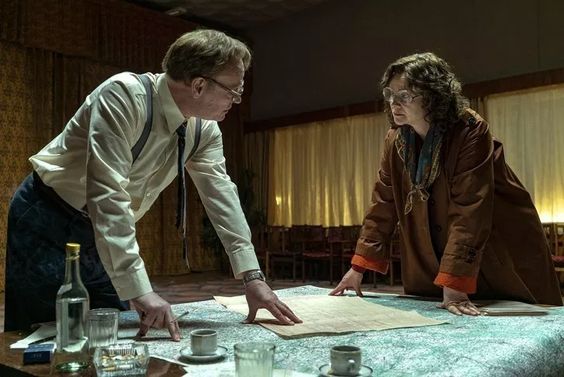
Public information films prepared people all over Britain for a nuclear war during the 1980’s as the anxieties of atomic powers become greater.
Compassion is an animal instinct that allows humans to recognise someone else is suffering. Giving and receiving compassion has tremendous benefits for humans mentally and physically. When compassion is received it often helps to relieve the pain of others. History and research has proved that the long-term survival of a species is aided by groups who are compassionate and supportive towards one and other. The absence of compassion in Chernobyl creates an element of horror as the instinctive behaviour has been destroyed, almost certainly having ruinous effects on human civilisation.
Mise en scene
The diegetic sound in Cherbnoyl supports the emotion of the narrative with the eerie alarm. This alarms the spectators as the narrative unfolds from their point of view.The sound is dominant and adds suspense to the scenes. The sound of the alarm is uncompassionate towards the protagonists and the reactor four explosion. Chernobyl utilises sound as a terror tactic.
The mise en scene contributes dramatically to this scene as the characters are mutilated, the human race has narrowly evaded extinction, but the survivors have little optimism.
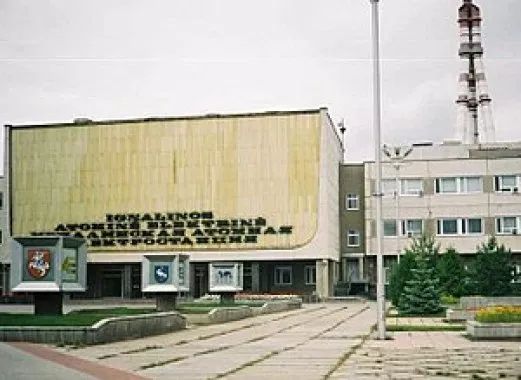
Dark lighting is used throughout Chernobyl. This is common characteristic used in traditional ghost stories. Chernobyl uses dark lighting to create grey and dull scenery, the dark lighting creates an eerie and mysterious atmosphere. It also contributes to the progression of the threatening narratives. A huge emphasis on safety is expressed with the use of interior and exterior locations in Chernobyl. Most of the filming took place at Ignalina in Lithuania, Chernobyl’s sister plant. External scenes were filmed in Kiev in the Ukraine and some filming took place at Chernobyl. The public are not safe outside or in the safety of their own home, the familiar has become the unfamiliar.
Once more there is a moral panic on the community as there is no public spirit to get through and pull together in order to survive. Instead force, bribes of money and threats are used to force minors and divers to risk their own lives and do as they are told. We rarely see an act of selfishness from the officials only from the solider with led car. Stereotypes of the KGB and Soviet Union representatives drinking vodka acting callous, somewhat heartless, and bulling are heavily used throughout the drama series and are over emphasised. Subsequently society has collapsed and only the fittest will survive.
Mise en scene very eighties hairstyles, moustaches, clothings, prams. Everything is dull and matches the time making it feel very real. The realism of the mise en scene pills the narrative together. Northern, Irish, British, and European accents were used by characters through the series. Although many could argue that this made the drama series feel unrealistic, the strong costumes, location, and sound manged to bring it all together.
Mise en scene is a vital feature in Chernobyl. This is in addition to the power of suggestion and how it contributes in manifesting terror.
Some familiar faces appeared in Chernobyl. Accents. Strangely worked but could it have been better?
As explained by character Chernobyl has a history of tragedy. Chernobyl cut corners on safety and costs
Books
Abbott. S, Jowett. L (2013) TV Horror. Investigating the dark side of the small screen. I. B Tauris.
American Psychiatric Association (1994) Posttraumatic Stress Disorder. In: Diagnostic and Statistical Manual of Mental Disorders. Fourth Edition. American Psychiatric Association, Washington
Bartholomew. R, Evans. H (2004) Panic Attacks. Media manipulation and mass delusion. Sutton Publishing.
Cochrane. K (2012) Women Of The Revolution Forty Years Of Feminism. Guardian Books.
Collins UK (2011) Holy Bible: King James Version (KJV) (Bible Kjv). Collins.
Haskell. M (1987) From Reverence to Rape: The Treatment of Women in the movies. 2nd Revised Edition.
Hein. C (2008) Laura Mulvey, Visual Pleasure and Narrative Cinema. Grin Verlag Ohg.
Hennessy. P (2010) The Secret State: Preparing For The Worst 1945 – 2010. Penguin.
Penner. J, Schneider. J. S (2012 ) Horror Cinema. Taschen GmbH; 25th Anniversary Edition.
Pirie. D (2007) A New Heritage of Horror. The Television Gothic Cinema. I B Tauris & Co Ltd

